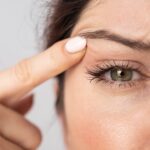Scalp pimples, those unwelcome bumps on your head, are more common than you might think. Just like acne on your face or body, scalp acne can be irritating and uncomfortable. If you’re dealing with these pesky breakouts, you’re likely wondering, “Why Do I Have Pimples On My Scalp?” The good news is, you’re not alone, and there are effective ways to manage and prevent them.
While not as frequently discussed as facial acne, scalp breakouts are a real concern for many. Your scalp is home to numerous hair follicles and sebaceous glands, which produce oil. When these follicles become clogged with excess oil, dead skin cells, and hair product residue, pimples can appear. However, it’s crucial to understand that not every bump on your scalp is acne. Let’s explore the causes, treatments, and preventative measures for scalp pimples to help you achieve a clearer, healthier scalp.
Scalp Acne or Folliculitis? Knowing the Difference
Similar to facial acne, scalp acne can manifest in various forms, including whiteheads, papules (small, skin-colored bumps), and cysts, often appearing around your hairline, at the roots of your hair, or on the back of your neck. Dr. Howard Sobel, a clinical dermatologic surgeon at Lenox Hill Hospital, notes that these blemishes are indeed forms of acne, mirroring those found on the face.
However, if you’re experiencing bumps that are particularly tender, itchy, or uniformly small, you might be dealing with scalp folliculitis rather than acne. Folliculitis is another skin condition that can mimic scalp acne. The key difference lies in the cause: folliculitis occurs when hair follicles become inflamed due to a bacterial or fungal infection, not just clogging. Dr. Sobel explains that folliculitis spots tend to be monomorphic (all the same size), smaller, itchier, and often more painful than typical acne pimples. Distinguishing between the two is important as while some treatments overlap, understanding the specific condition can guide more effective management.
Unpacking the Reasons Behind Scalp Pimples
“Scalp pimples arise from a combination of factors, including bacteria, hormonal fluctuations, and excessive oil production,” explains Dr. Lindsey Zubritsky, a board-certified dermatologist at Premier Dermatology and Skin Cancer Center. Although scalp acne doesn’t discriminate based on hair type or texture, Dr. Tiffany Clay-Ramsey, a dermatologist at Epiphany Dermatology, points out that individuals with thin, straight hair may be more prone to it. This is because this hair type tends to be oilier, which can contribute to pore congestion on the scalp. Generally, those with naturally oily scalps are more likely to experience these breakouts.
Beyond natural predispositions, certain hair care habits and products can also trigger scalp acne. Heavy hair products like gels, pomades, waxes, and hairsprays are known culprits. These products can lead to acne cosmetica, which are breakouts caused by substances applied to the skin, according to the American Academy of Dermatology. Frequent hat-wearing can also play a role. The friction from hats can irritate the scalp, while the material can trap oil and bacteria, creating an environment conducive to pimple formation, as Dr. Zubritsky mentions.
In some instances, scalp pimples can be a symptom of underlying medical conditions. Conditions like lichen planopilaris (a type of alopecia), scalp psoriasis (characterized by itchy, scaly patches), and seborrheic dermatitis (scalp eczema) can manifest as pimple-like bumps on the scalp. Dr. Zubritsky advises seeking professional help if you notice more concerning symptoms like bleeding, flaking, or significant pain, as these could indicate a condition requiring specific medical attention. Consulting a dermatologist is crucial for an accurate diagnosis and appropriate treatment plan in such cases.
Home Care for Scalp Acne: What You Can Do
When dealing with scalp pimples, one of the most important things to remember is to resist the urge to pop or squeeze them. Dr. Sobel strongly advises against this, as it can create open wounds that become entry points for bacteria, increasing the risk of infection. Touching pimples with your fingers can further exacerbate the problem and hinder the healing process.
Instead of picking, focus on gentle cleansing and avoiding products that might be contributing to the issue. Washing your hair regularly with a mild shampoo can help remove excess oil and product buildup. Look for shampoos that are non-comedogenic and formulated for sensitive skin to minimize irritation. It’s also beneficial to reassess your hair care routine and products. Consider switching to lighter formulas and avoiding heavy gels, waxes, and pomades, especially if you suspect they are contributing to your breakouts. If you frequently wear hats, try to reduce the frequency or choose breathable materials and ensure you wash hats regularly.
For persistent or severe scalp acne, or if you suspect folliculitis or an underlying skin condition, seeking advice from a dermatologist is the best course of action. A dermatologist can accurately diagnose your condition and recommend prescription treatments, such as medicated shampoos, topical antibiotics, or other therapies tailored to your specific needs. They can also help rule out any underlying medical issues and guide you towards a clearer, healthier scalp.
